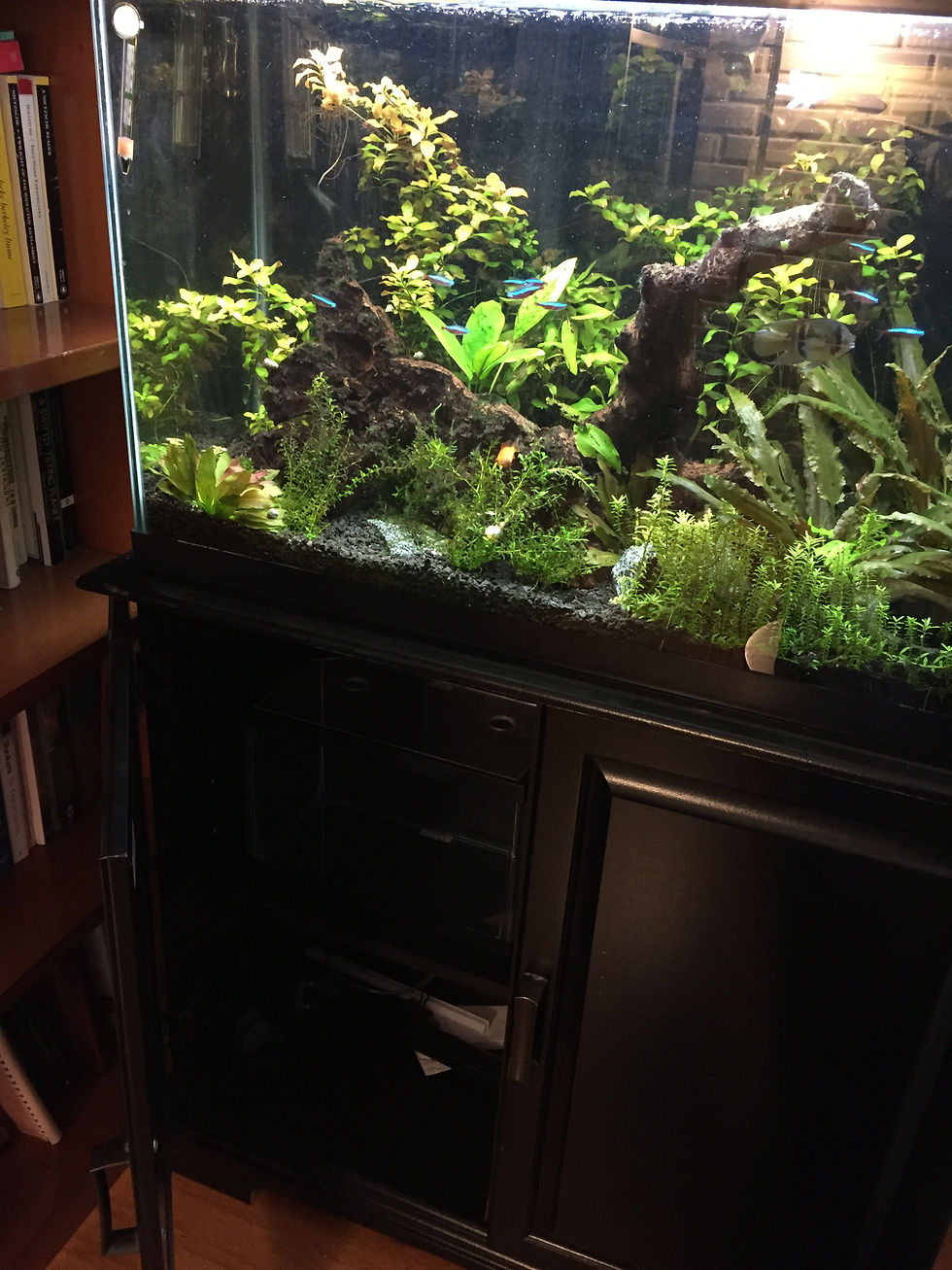I still remember the magical feeling of walking into John's Fish Pond as a kid, and peering into each little wonderful aquarium universe. The walls of the store were dark, helping each tank to glow with life. Nothing was more mesmerizing than a brilliant school of cardinal tetras.
Skip ahead over a handful of decades . . . we have really enjoyed keeping a small school of cardinals in this 29 gal. planted tank.

But now that we are getting into breeding, we've decided to take up the challenge of breeding cardinals. We've done some reading, listened to some resources, and carefully watched a step-by-step how to posted by Mark's Aquatics:
https://www.youtube.com/watch?v=_B1rDXyMvu0
So, we have a game plan. But we'd like to ask for any and all advice from the PVAS community. Here's what we have in mind.
(1) In general, the plan is to prepare a breeding tank beneath the cabinet that the 29 gal is set on:

(2) We have been pre-cycling a small sponge filter for use down the road:

(3) We plan to set up a 2.5 gal aquarium for the breeding, and to move Cardinals down from the 29 gal. above:

(4) We covered the back and sides with black foam board to make the tank dark. The front cabinet doors will be covered. The only light that will be able to enter will be from the top, and that very limited by the darkness of the cabinet - which is open at the back:

(5) We recut a piece of acrylic for the lid:

(6) For a point when some light is appropriate, we covered the plastic exterior of a small LED with yellow and blue masking tape to produce a dull blue light:


(7) We have an old, but reliable heater for keeping the temperature warm:

(8) For preparation of the water and substrate, we are fortunate to begin with very soft water from our tap. Our pH runs a bit high though. Our plan is to use a combination of compost and autumn leaf litter. After our meeting this month about black water, we got to thinking about how our mosquito larvae gathered from backyard bins were dark with tannins from fallen leaves. So, we plan to prepare the compost (similar to peat) in a stocking submerged in a separate container with cycled water along with leaf litter to raise tannins and lower pH:


(9) Basically, the plan is to prep the substrate, fill 2.5 gal. with cycled tannin water, add heater & sponger filter, ensure the cycle is complete, add an additional small bed of java moss above the compost / leaf substrate for starter infusoria when eggs first hatch, then lower the sponge filter flow to virtually nothing and add one to two pairs of cardinals (females are the larger plump ones):

(10) After 24-48 hrs, remove the adults and wait to see if eggs hatch. Meanwhile, prepared infusoria will be first foods. This followed by vinegar eels, perhaps micro worms, and eventually baby brine shrimp.
Once the fry are visible and free swimming, some light could be added along with gentle sponge filtration.
What are your thoughts? Anything to improve / change / amend this plan? We'd love to hear from you -- especially if you've had success with raising cardinal tetras.
We are not in this for a business -- not trying to make money. It's all for the fun of the hobby, with BAP acting as a motivation. If we're successful, we'd love to bring a big bag of Cardinals in to a mini-auction way down the road next year!

Thanks! I had to message a friend who is a retired game warden to inquire about alder cones. He thinks he's got a spot we can check out, about 15 miles away near the inlet of a large lake.
We tested the pH and KH in the melted, tannin-stained rain water from the back porch tub. It was as low and soft as the API test kit would read.
Also finished building the vinyl screen breeding basket today, constructed around a little net-breeder frame: